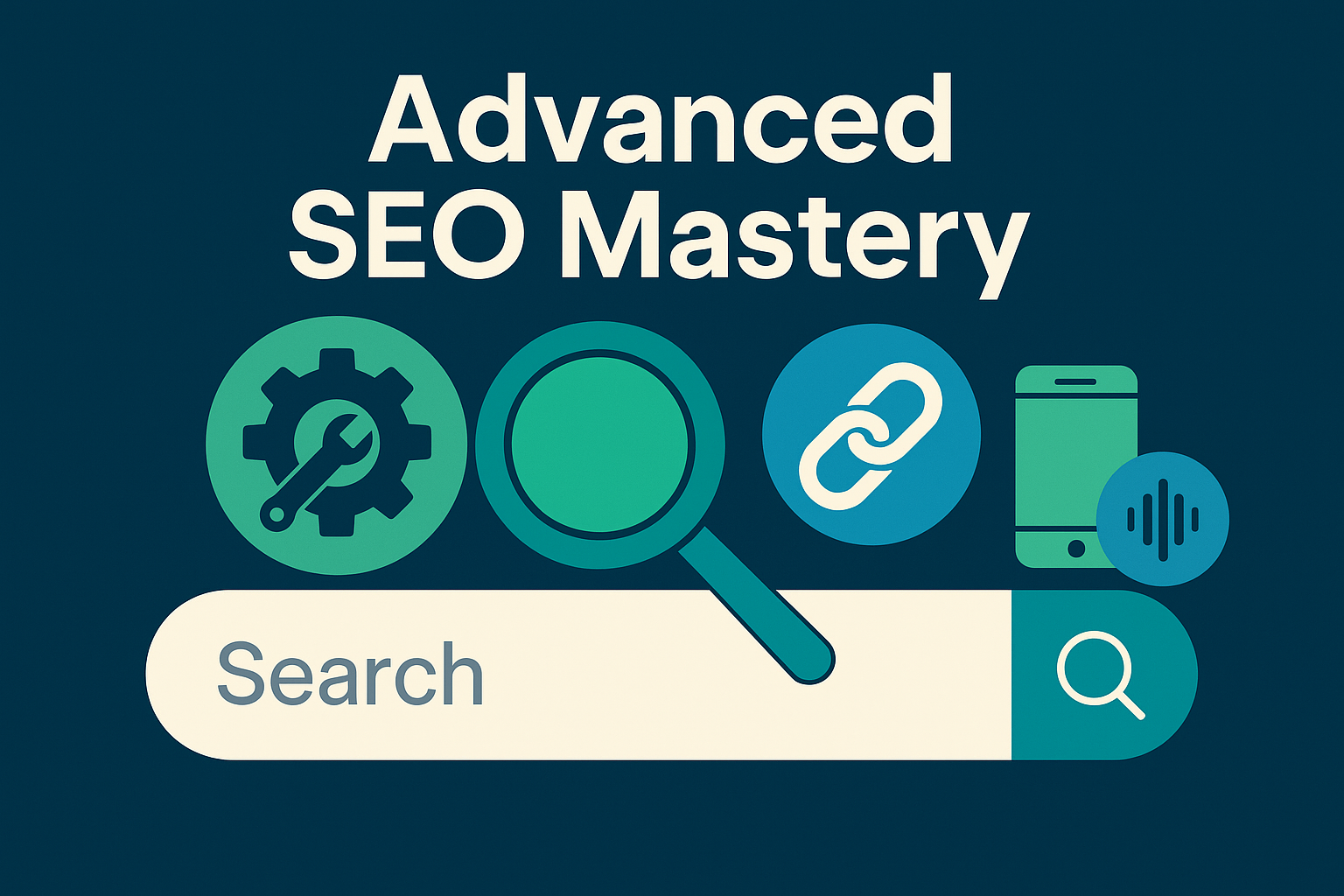June 18, 2025 | by Rayhan

SEO Search Optimization isn’t just about sprinkling keywords—it’s the secret machinery powering tomorrow’s web success. Picture your site as a high‑performing race car: if every gear—technical, content, off‑page, local, voice—is fine‑tuned, you’ll leave competitors eating dust. In this article, we dive into cutting‑edge strategies shaped by real‑world case studies, neuromarketing insights, and irresistible storytelling to help you climb search rankings, boost conversions, and future‑proof your online growth. Buckle up—it’s time to shift into high gear.
Advanced SEO goes beyond the basics of on-page and off-page techniques. It involves a deep understanding of algorithms, user intent, and technical frameworks that drive search visibility. For instance, utilizing concepts like Semantic Search can enhance how content is perceived by engines, making them more relevant.

Implementing advanced SEO strategies can lead to significant advantages for any website, such as:
For example, a business employing structured data to highlight its products can witness a more informative display in search results, drawing more clicks.

Website speed plays a crucial role in user experience and search rankings. A slow-loading website can lead to higher bounce rates. For example, optimizing image sizes and reducing server response times can significantly improve load times.
With mobile users overtaking desktop, ensuring your site is mobile-friendly is imperative. Implement responsive design to provide users with a seamless experience.
Structured data helps search engines understand your site better. By marking up content with schema, you’re more likely to earn rich snippets in search results, enhancing visibility. Learn more about schema implementation! This is essential for improving both user experience and search engine performance.
Advanced keyword research goes beyond merely identifying high-traffic terms. It involves understanding user intent and analyzing competition. Tools like SEMrush or Ahrefs can uncover long-tail keywords that are less competitive yet highly relevant.
Conducting a content gap analysis will help you identify topics your competitors cover that you don’t. For example, if a competitor ranks high for “SEO optimization examples” and you haven’t addressed that topic, it’s time to create relevant content to fill that void.
When crafting content, remember to focus on readability and keyword placement. Use headings strategically and include bullet points to enhance scannability. For instance, writing engaging meta descriptions sets the tone and invites users to click on your pages.

Link building remains a cornerstone of off-page SEO. Advanced techniques involve guest blogging on reputable sites and utilizing broken link building, where you offer replacements for dead links found on relevant websites.
Social media platforms can amplify your SEO efforts. By sharing quality content and engaging with your audience, you can drive traffic back to your site.
Collaborating with influencers can elevate your reach. Their established audience can drive referrals and quality backlinks, creating credibility. For example, partnering with an industry leader for a product review can lead to fruitful traffic and brand mentions, boosting your site’s authority.

Harnessing advanced features in Google Analytics can provide deep insights into user behavior. Utilize custom reports and dashboards to track specific metrics that align with your business goals.
Conversion Rate Optimization (CRO) is all about turning visitors into customers. Use A/B testing to evaluate different design elements or calls-to-action on your site.
Identifying the right metrics is crucial for understanding performance. Focus on metrics like bounce rate, average session duration, and conversion rate. Regularly reviewing these metrics can inform strategic adjustments, ensuring ongoing growth and success for your SEO initiatives.
Local keyword targeting is essential for businesses aiming to attract nearby customers. It involves using phrases that include city names or regional terms, such as “Italian restaurant in Manhattan.” Researching these keywords can significantly increase your visibility within local searches.
Optimizing your Google My Business (GMB) listing is a game-changer. Make sure to keep your profile updated with accurate information, high-quality images, and regular posts about offers or events. This not only improves your local ranking but also helps potential customers find you easily.
Listing on niche local directories can further enhance your online presence. For example, being featured on local business directories or industry-specific sites boosts credibility. These listings can generate quality backlinks, ultimately improving your overall SEO performance and local visibility.
As voice search becomes more prevalent, optimizing for it is essential. Typically, voice queries are longer and more conversational than typed searches, so focusing on natural language is key.
Getting featured snippets can boost your visibility significantly. Structure your content to answer specific questions clearly and concisely. Use bullet points and numbered lists to present information in an easily digestible format. For example, answering “What are the benefits of SEO?” in a clear list format enhances your chances of being featured prominently in search results. This not only provides value but also drives more traffic to your site.

As AI and machine learning continue to evolve, they are transforming how we approach SEO. These technologies can analyze vast amounts of data to uncover patterns and optimize strategies effectively.
With video content gaining traction, optimizing for video SEO is essential. This involves using keywords in titles, descriptions, and tags while ensuring videos are mobile-friendly and of high quality.
Emerging technologies, such as augmented reality (AR) and virtual reality (VR), are reshaping how users interact with content. Brands need to consider these technologies for engagement and to stay ahead in the SEO landscape, integrating AR experiences that complement their website can drive more traffic and user interaction. Being proactive about these trends will ensure a competitive edge in the ever-changing digital landscape.
As we wrap up our discussion on advanced SEO optimization techniques, it’s clear that a multifaceted approach is essential. From technical SEO enhancements to off-page strategies, each component plays a crucial role in boosting visibility. Don’t forget about the importance of local SEO and adapting to trends like voice search and video content.
To ensure your SEO efforts are sustainable, create a long-term roadmap. Consider these steps:
By following these practices, you can build a resilient online presence and continuously optimize for success.
Q1: What is advanced SEO optimization beyond on‑page?
A1: It includes technical enhancements (like site speed, mobile responsiveness, structured data), off‑page strategies (link building, social amplification, influencer outreach), and data‑centric analysis using tools like GA or A/B testing to tune performance.
Q2: How can structured data improve search results?
A2: Using schema markup helps search engines interpret your content and display rich snippets—like star ratings or product availability—to increase CTR and visibility.
Q3: What are top techniques for voice‑search optimization?
A3: Use natural, conversational phrases and question-style keywords, focus on local context (“near me”) and concise answers to target featured snippets.
Q4: How do I find content gaps compared to competitors?
A4: Use tools like SEMrush or Ahrefs to analyze competitor keywords and topics. Look for queries they rank for that you don’t, then craft comprehensive content to close those gaps.
Q5: What future SEO trends should I prepare for?
A5: AI/ML‑driven personalization, video content optimization, and emerging formats like AR/VR experiences will shape next‑gen SEO tactics—start experimenting now to stay ahead.
View all